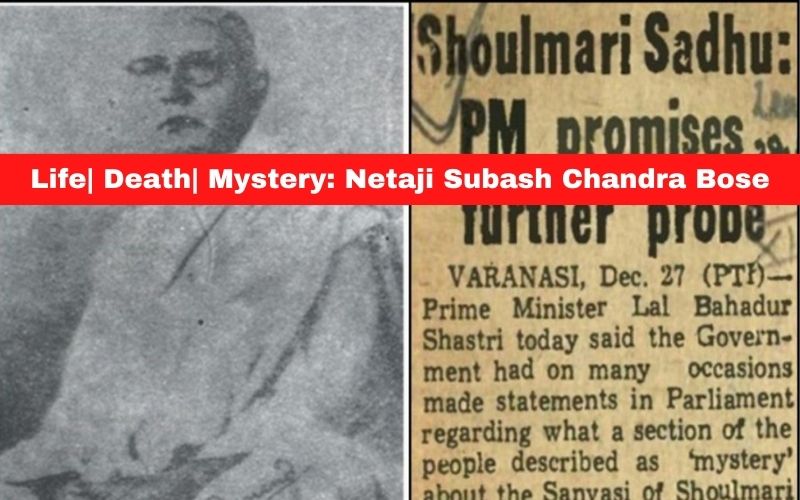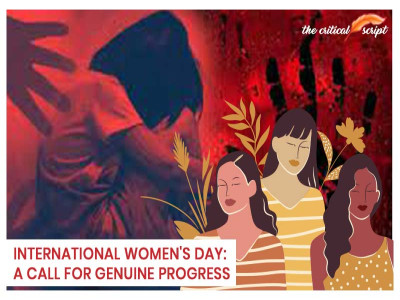
Life| Death| Mystery: Netaji Subash Chandra Bose
Subhas Chandra Bose was an Indian nationalist whose resistance to British rule in India made him a hero among many Indians. In early 1942, the honorary title Netaji, which means "respected leader" in Hindi was named by the German and Indian officials of the Special Bureau for India in Berlin and Indian soldiers of the Indische Legion.
Briefs about Netaji:
Subhas Chandra Bose was born on January 23, 1897, in Cuttack, Orissa Division, Bengal Province, British India (currently in Cuttack district, Odisha, India). He passed away on August 18, 1945, at the age of 48, from third-degree burns sustained in an air crash at Army Hospital Nanmon Branch in Taihoku, Japanese Taiwan (currently Taipei City Hospital Heping Fuyou Branch in Taipei, Taiwan). From 4 July 1943 to 18 August 1945, he served as the second leader of the Indian National Army, and from 18 January 1938 to 29 April 1939, he presided over the Indian National Congress. Rajendra Prasad succeeded Jawaharlal Nehru as president.
Contributions to Indian Freedom Movement:
Bose served as one of the two energetic leaders of the Congress Party alongside Jawaharlal Nehru, although he eventually resigned over disagreements with Mahatma Gandhi's advocates. Unlike Gandhi, he wasn't a believer in using nonviolence as a way of accomplishing independence. He later founded the All India Forward Bloc as a branch within the Congress in 1939, with an ideology that leaned toward socialism and leftist authoritarianism. He was arrested for organising protests in Calcutta for the removal of the monument memorialising the Black Hole of Calcutta but released after a few days under strict surveillance.
Then, in 1941, he made his way to Germany via Afghanistan and the Soviet Union. He met with Nazi leaders while in Germany to launch an armed uprising against the British to achieve independence. Since the Axis powers were opposed to the British, he intended to make partners with them. He established the Indian Legion under the Germans' wing using roughly 4500 Indian men who were formerly serving in the British army and had been captured by the Germans in North Africa. In his exile, he rose to become the head of the Azad Hind government, also known as the Provisional Government of Free India. Its military was the INA, which had its headquarters in Singapore.
After growing impatient with the Germans' lacklustre support for Azad Hind, he later departed Germany for Japan in 1943. Bose's presence in Japan saw the revival of the Indian National Army (Azad Hind Fauj), which had been founded earlier with Japanese aid. With his fierce remarks, including one of his most well-known statements, "Give me blood, and I will give you freedom," he motivated the soldiers. He oversaw the INA, which took over the Andaman and Nicobar Islands and assisted the Japanese army in its assault on northeast India. However, the British forces forced them to retreat after the Battles of Kohima and Imphal.
His Death:
On August 18, 1945, a plane crash in Taiwan resulted in third-degree burns that ultimately caused Netaji Subash Chandra Bose's death. The bomber carrying the Indian nationalist leader, who was a guest of Lieutenant General Tsunamasa Shidei of the Imperial Japanese Kwantung Army, crashed shortly after takeoff from the airport in Taihoku, Japanese-occupied Formosa, now Taipei, Taiwan. General Shidei, the co-pilot, and the main pilot were all instantly dead. Bose, who was covered in gasoline when he exited the burning bomber, was taken to the Nanmon Military Hospital south of Taihoku, where the chief surgeon Dr. Taneyoshi Yoshimi, two other doctors, Drs. Truruta and Ishii, as well as a half-dozen support staff members and nurses, treated his extensive upper-body burns for six hours. Between nine and ten o'clock in the evening Taihoku time, he eventually passed away.
But many people in India, especially in Bengal, refused to accept that he had passed away. They did so then and they continue to reject both the fact and the circumstances surrounding his passing. After Bose's death, conspiracy rumours started to surface and have continued ever since, perpetuating several martial myths about him.
Conspiracy and Mystery:
In 1956, the Netaji Inquiry Committee was established by the Indian government to look into the death of the freedom fighter. It was composed of Shahnawaz Khan, the parliamentary secretary at the time, Suresh Chandra Bose, Netaji's brother, and S.N. Maitra from the Indian Civil Service. Many enquiry committees were tasked with determining what took place that day. Both the Shah Nawaz Committee (1956) and the Figgess Report (1946) concluded that Bose passed away in a plane crash in Taiwan. The earlier reports were also supported by the Khosla Commission (1970). But Netaji's brother refused to sign the document, claiming that this was a cover-up and blaming Jawaharlal Nehru among other prominent figures.
The Mukherjee Commission (2005), however, found that there was no way to substantiate Bose's passing. The Mukherjee Commission, led by Justice Manoj Mukherjee, was established in 1999 to look into Netaji's death. The commission's findings revealed the public's long-held suspicions that Netaji did not die in a plane crash and that the ashes in the Japanese shrine are not his. The Mukherjee Commission's conclusions led to one of the primary reasons why people began to doubt the theory behind the plane disaster. But this report was rejected by the government. The Justice Khosla Commission conducted a new investigation into Netaji's death in 1970 and came to the same result as all the previous inquiries: Netaji was killed in an accident.
Netaji was one of the backbones of the Indian freedom movement. He was in favour of using force to achieve total Swaraj and advocated for it. But throughout the years, the plane accident death narrative has continued to face criticism and nobody could/ some still can't believe that his death was real. A saint by the name of Gumnami Baba in Uttar Pradesh has long been the subject of persistent rumours that he is Netaji in disguise as well as there have been numerous requests for the declassification of Netaji's records, and in 2015, the West Bengal government released some Netaji-related records from the state archives. As a result of this action, the Central Ministry declassified 304 files about Netaji in January 2016. However, according to the government, no more Bose-related files exist in the archives to be declassified because more than 2000 of them have already been made public since 1997.
Only time will tell the mystery around the death of one of the most beloved public figures of India - Netaji Subash Chandra Bose.
Disclaimer: The opinions expressed in this article are those of the author's. They do not purport to reflect the opinions or views of The Critical Script or its editor.

Newsletter!!!
Subscribe to our weekly Newsletter and stay tuned.
















Related Comments